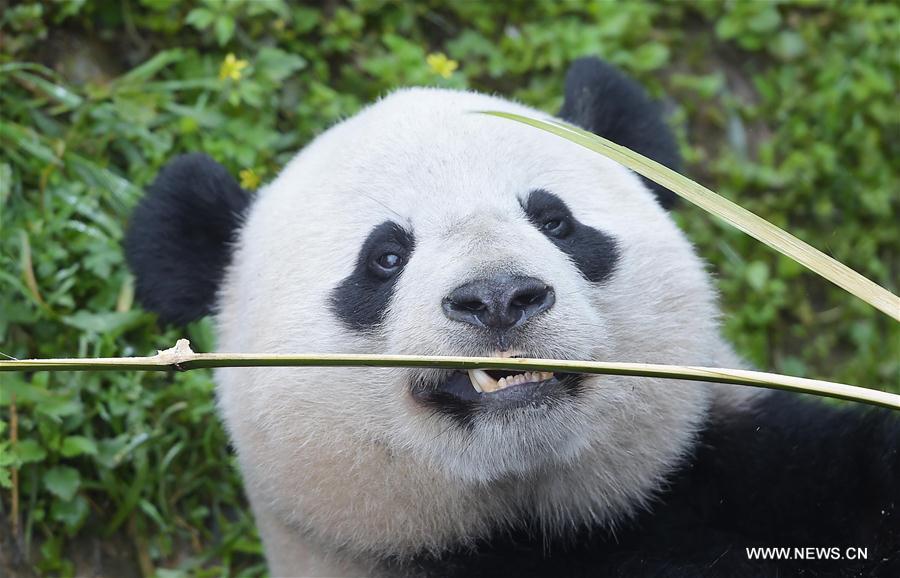
Photo taken on March 22, 2017 shows the giant panda Bao Bao in the quarantine area of the Dujiangyan base of the China Conservation and Research Center for the Giant Panda in southwest China's Sichuan Province. Bao Bao, a giant panda born in the United States, ended its one-month quarantine here on Friday after returning to China. (Xinhua/Xue Yubin)
CHENGDU, March 24 (Xinhua) -- US-born panda Bao Bao met the public for the first time in Chengdu in southwest China's Sichuan Province on Friday.
Around 2:30 p.m., the three-year-old female walked out of her house and met tourists at Dujiangyan base of the China Conservation and Research Center for Giant Panda.
Bao Bao arrived in Chengdu on Feb. 22 and has gone through a month of quarantine in a 100-square-meter enclosure.
According to Li Desheng, panda expert with the center, Bao Bao is in very good health.
"Bao Bao got used to her new diet really quickly. She has even started to eat carrots which were her least favorite food in the States," said Wei Rongping, head of the Dujingyan base.
"Bao Bao eats more bamboo than some adult pandas and she has put on 2 kilograms during her staying at the base," said Wei.
Bao Bao, which means "precious" or "treasure" in Chinese, was born on Aug. 23, 2013 at the Smithsonian's National Zoo in Washington D.C., the second panda born there.
Her parents Mei Xiang and Tian Tian moved to the American zoo in 2000 under a collaboration agreement between China and the United States. According to the agreement, panda cubs born in the United States to parents on loan from China must be returned to China.
The center has similar collaborations with 12 zoos in 10 countries. A total of 26 pandas are abroad, and 17 of their cubs have survived, according to Zhang Zhizhong, deputy head of the center.
The center has welcomed back 11 pandas from abroad so far, Zhang said.











